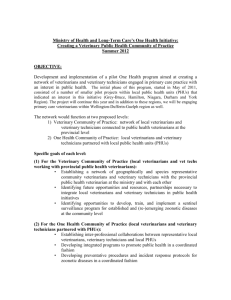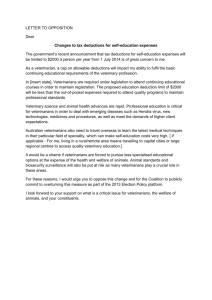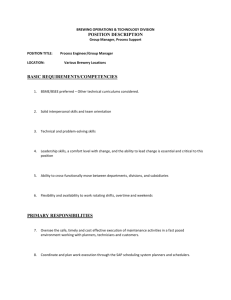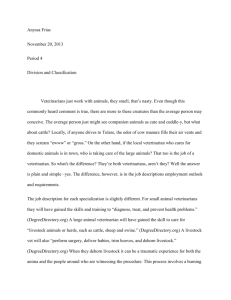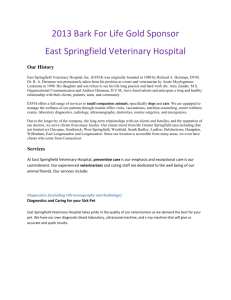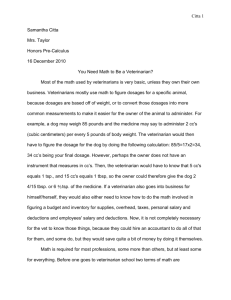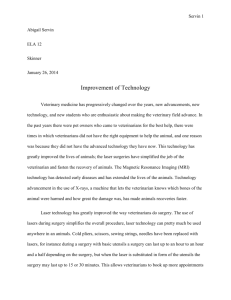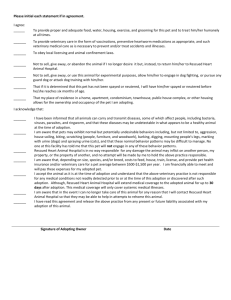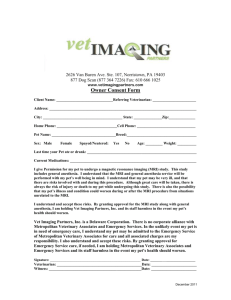Rethinking Client and Technician Interaction
advertisement
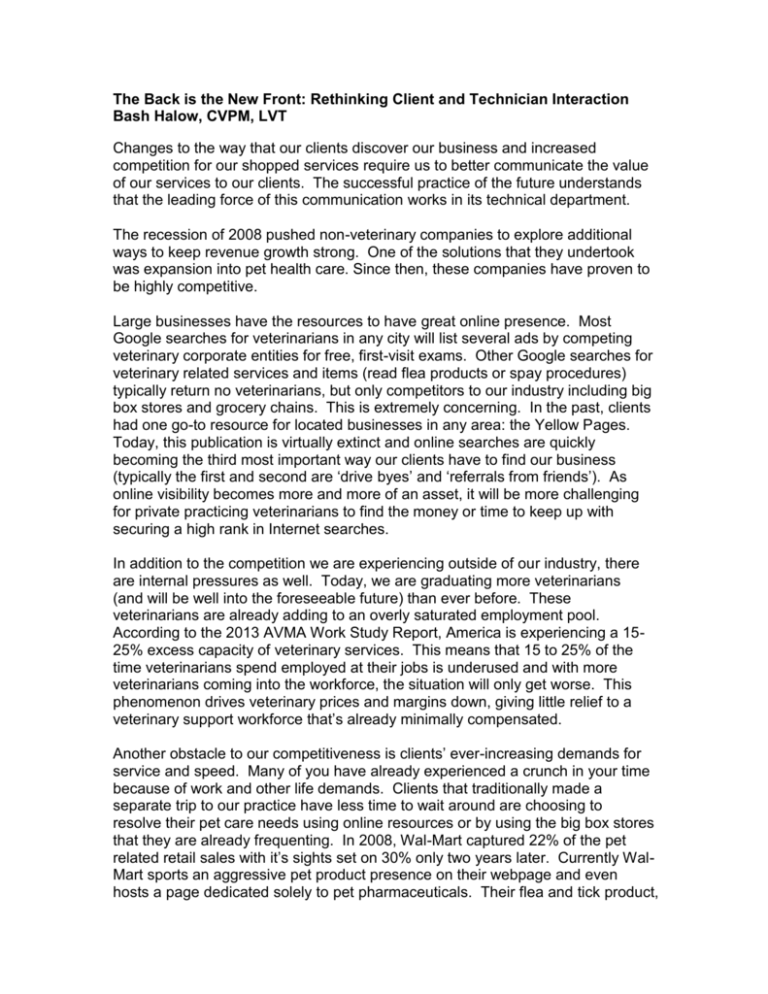
The Back is the New Front: Rethinking Client and Technician Interaction Bash Halow, CVPM, LVT Changes to the way that our clients discover our business and increased competition for our shopped services require us to better communicate the value of our services to our clients. The successful practice of the future understands that the leading force of this communication works in its technical department. The recession of 2008 pushed non-veterinary companies to explore additional ways to keep revenue growth strong. One of the solutions that they undertook was expansion into pet health care. Since then, these companies have proven to be highly competitive. Large businesses have the resources to have great online presence. Most Google searches for veterinarians in any city will list several ads by competing veterinary corporate entities for free, first-visit exams. Other Google searches for veterinary related services and items (read flea products or spay procedures) typically return no veterinarians, but only competitors to our industry including big box stores and grocery chains. This is extremely concerning. In the past, clients had one go-to resource for located businesses in any area: the Yellow Pages. Today, this publication is virtually extinct and online searches are quickly becoming the third most important way our clients have to find our business (typically the first and second are ‘drive byes’ and ‘referrals from friends’). As online visibility becomes more and more of an asset, it will be more challenging for private practicing veterinarians to find the money or time to keep up with securing a high rank in Internet searches. In addition to the competition we are experiencing outside of our industry, there are internal pressures as well. Today, we are graduating more veterinarians (and will be well into the foreseeable future) than ever before. These veterinarians are already adding to an overly saturated employment pool. According to the 2013 AVMA Work Study Report, America is experiencing a 1525% excess capacity of veterinary services. This means that 15 to 25% of the time veterinarians spend employed at their jobs is underused and with more veterinarians coming into the workforce, the situation will only get worse. This phenomenon drives veterinary prices and margins down, giving little relief to a veterinary support workforce that’s already minimally compensated. Another obstacle to our competitiveness is clients’ ever-increasing demands for service and speed. Many of you have already experienced a crunch in your time because of work and other life demands. Clients that traditionally made a separate trip to our practice have less time to wait around are choosing to resolve their pet care needs using online resources or by using the big box stores that they are already frequenting. In 2008, Wal-Mart captured 22% of the pet related retail sales with it’s sights set on 30% only two years later. Currently WalMart sports an aggressive pet product presence on their webpage and even hosts a page dedicated solely to pet pharmaceuticals. Their flea and tick product, Pet Armor, a fipronil based medication, was listed in 2012 as one of the most successful new products to hit the market with over 144 million dollars in sales in just the first year. These facts demonstrate that Wal-Mart and like companies are not only pursing opportunities in pet product retail sales, but that people are responsive to their efforts. These competitors have taken a series bite out of revenue that traditionally made up as much as 30% of our total income, namely our flea and tick products sales, our pharmacy, our vaccines and our spay and neuter surgeries. With so much of our income at risk and no alternative products or services to offer, veterinarians must increase client loyalty and compliance in order to remain competitive and financially healthy. Traditionally, we’ve relied upon our client care representatives to answer the phone, talk to clients and make our appointments, but too often our receptionists represent the most inexperienced and untrained members of our group. In order to take the next step towards improved client bonding and compliance, technicians must begin to taken an active role in engaging with and educating our client base. Technicians can participate in improved client relations in several ways, each of which is discussed below. These are: assistance with hospital-wide education, the creation of hospital wide ‘patient well-being’ protocols, client interaction protocols and scripts, and smart marketing. Keep in mind that this is not an exclusive list. Assistance with Hospital Wide Education Too often our practices are deficit in training. Simply put, veterinary practice managers often find themselves pulled in too many directions to make sure that everyone is educated fully and thoroughly. Technicians can take a lead in training employees by first reviewing the cycle of service. These are the junctures of interaction that we have with clients as they contact and go through our practice. Examples of cycle-of-service points are: the phone call to the practice, triaging cases on the phone, booking appointments, confirming appointments, when clients enter our building, while they wait for their appointment, and so on. By reviewing each step, our technicians can look for opportunities to connect and educate, then train the rest of the team to be compliant with those recommendations. Technicians should also collaborate on a list of set questions for each patient history and a protocol for client interaction with each visit. Setting expectation for not just what you say, but how you say it, can make all the difference between a client interaction that feels valuable and one that feels like it can be exchanged for one at any number of competing practices or stores. Admissions Patient Admissions to the practice are another area that technicians can rethink and improve upon. Too often, clients drop off their pets and see us in the worse possible light. Typically before they go to work (and just as we are beginning work ourselves), they line up at the door, admitted in, and then hurriedly taken through a series of questions before their pet is whisked away ‘to the back’. Technicians could devise a list of patient well-being protocols that showed our attention to patient’s feelings during the inpatient procedure that could be successfully and passively demonstrated to the client during the admission process. Marketing In-house marketing materials are another area that can be improved upon. Each practice has a unique way of explaining the value of its services, yet they often rely on the brochures, videos and wall posters created by (and in the words of) others. In this digital age, it takes little time or money to have customized materials built for your practice. Having technicians collaborate on the message they want to send to clients, and then hiring a third party to see that this vision is realized, can be expeditiously and inexpensively accomplished. The time has come for our most experienced and often most senior team members to step out of the ‘back’ and into the effort of demonstrating to clients are unique value. Working with clients in a more engaged fashion will not only improve our success with capturing client loyalty and increasing client compliance, but will enrich the jobs of our technicians, underline their importance to the practice, and create a strong argument for higher wages.
